Solana is an open-source, permissionless blockchain. It’s one of the quickest modern blockchains with thousands of applications in DeFi, NFTs, Web3, etc. Solana offers decentralized apps (dApp) to developers. This open-source blockchain has 350 Solana initiatives. Here, Covemarkets.com discuss a few of the top most promising Solana projects.
Overview
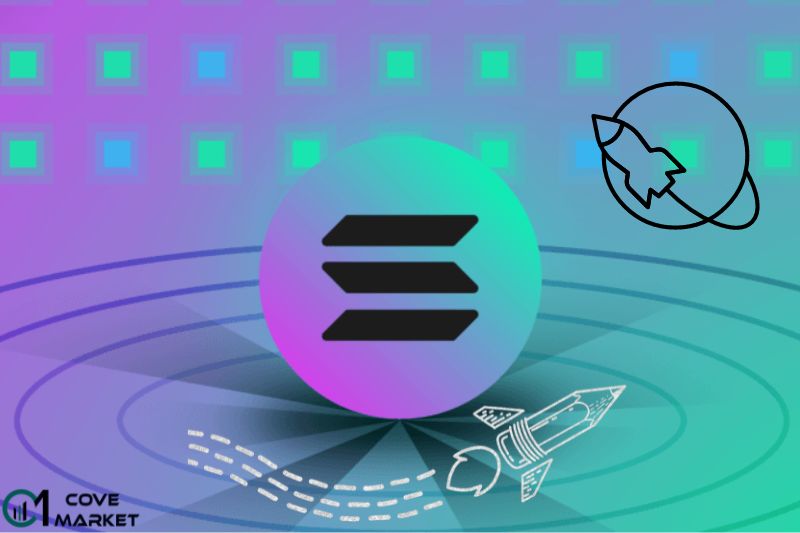
What is Solana?
SOL is a smart-contract blockchain that is rapidly expanding. It enables transactions that are both quick and inexpensive, and it has a high throughput.
It satisfies the requirements that developers have for launching a scalable decentralized application.
What are Solana-based Projects?
Any kind of project can be built on Solana because it is an Ethereum-like high-performance layer one blockchain.
Solana supports DeFi lending initiatives such as Tulip, DEXs such as Serum, Automated Market Makers (AMMs) such as Raydium, and Cross-margin trading platforms.
One of them is Mango, and Phantom, a DeFi wallet that works with the Solana ecosystem and enables NFTs and Staking.
There are Play-to-Earn games like StepN, metaverse projects like Star Atlas and BR1, and more.
Top Solana Projects To Know In 2023: Which Is The Most Prospective?
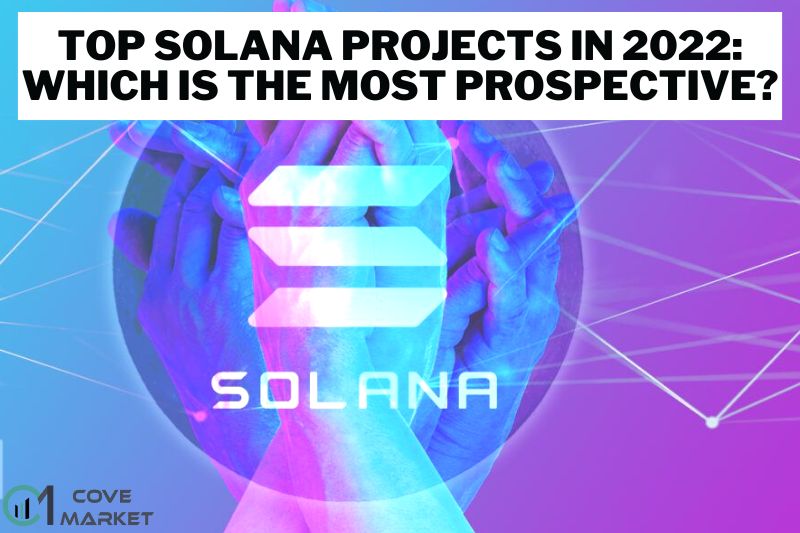
Over 350 projects have been made possible through Solana; however, in this article, Covemarkets.com ‘ll concentrate on the top its projects. Most of these initiatives concentrate on the trendiest market segments, such as DeFi, blockchain games, and NFTs.
Solanart
The first fully functional and open NFT marketplace within the Solana ecosystem is Solanart.
Users can connect their SPL wallets and effortlessly browse, buy, and sell digital treasures with the help of Solanart, which strongly emphasizes providing a user-friendly experience.
Even though the platform is still in open beta, Solanart is now home to some of the most well-known NFT collections that are based on Solana.
These collections include Aurory, Moonrock Capital, and Degenerate Ape Academy. The trading volume is substantial, and there is significant interest from institutional investors.
Audius (AUDIO)
The most recent initiative to relocate to SOL , Audius, has expanded quickly and already has more than 1 million monthly listeners.
To share and defend the globe’s music, Audius is building a completely decentralized community of musicians.
Creators can produce immutable, time-stamped records for their works of art and register assets using Audius.
Audius had to think about relocating their project to another blockchain as a result of the blockchain’s increasing popularity, worries about costs, and a lack of security.
Over 20 L1 and L2 scaling solutions are said to have been specified or built into proofs of concept by the Audius team.
After conducting this research, Audius decided to scale the network using Solana, a high-speed L1 blockchain that can handle 50,000 transactions per second at only $0.00001 for each interaction.
Quality is a critical factor in why this project switched to Solana and why it’s possible that other successful projects may follow suit and leave other innovative contract platforms.
These benefits are significant for project builders:
- Offering 1 million transactions for $10 is cheap.
- Fast: Confirmations frequently happen in under a second, and block times are 400 ms.
- Live: The mainnet has been operational for almost 8 months and has handled close to 5 billion transactions.
- Decentralized: More than 500 nodes on the test net and over 180 on the mainnet.
Arweave (AR)
Arweave is a new sort of storage that uses sustainable and eternal endowments to store data forever. This combination makes data persistent.
Arweave is a “new data storage blockchain system” that creates permanent data storage and a permanent internet. Pay-once-forever storage.
Arweave created block weave, a blockchain-based data storage platform, to combat the internet’s direction. Blockweave is an innovative blockchain. A blockchain database uses ‘blocks’ to store immutable data.
All existing database information must be validated by a community before adding new data. This procedure is secure, but it’s time- and energy-intensive.
Arweave changed the protocol, so only a random block, not the entire blockchain, needed to be confirmed. Arweave calls it a block weave rather than a blockchain because recalling the preceding block generates a weave structure.
Blockweave solved the challenge of securely storing information that could be quickly retrieved.
This innovation on the block weave technology allowed Arweave to develop rules and incentives for data storers and ensure they did so for lengthy periods.
Aurory (AURY)
The game Aurory is not like other its projects. A popular gaming project with play-to-earn elements is this one. This project is based on the Solana ecosystem, and Serum powers its in-game market.
Both players vs. player and player vs. environment game types are available in this fantasy game. Players can gather NFTs and $AURY tokens in player vs. player and player vs. environment game modes.
Players accumulate tokens and NFTs by engaging in the game. Players can trade these in the market to improve their chances of winning the game.
Aurory has enjoyed tremendous success. The 10,000 Auriorian characters NFT in September was quickly sold out. Future Aurory developers intend to use these NFTs as 3D models.
Orca (ORCA)
ORCA is a decentralized exchange (DEX) that uses automated market makers (AMMs) and has its liquidity pool. Tokens can be traded using Orca, and cryptocurrency advocates and project backers can set up their Orca liquidity pools.
One of the best Solana projects, Orca, uses the network’s natural advantages. Fast trades may be made on the exchange in under a second, and gas costs are under $0.00002. The exchange returns 0.3% of the trading fee to the liquidity pool as a means of rewarding liquidity providers (LPs).
For bitcoin traders and investors, Orca offers three key features:
Token Swaps: By utilizing the DEX’s liquidity pools, users can trade tokens through Orca.
In return, LPs can contribute to liquidity pools and earn a portion of the trading fees from swaps.
LPs can earn trading commissions and ORCA tokens through Yield Farming (Aquafarm), which will be implemented in some of Orca’s liquidity pools. In the future, additional projects will be able to contribute their coins.
Utility token ORCA is the native token of Orca. This provides governance voting rights, a new feature that compensates LPs in the liquidity pools. ORCA has a $203,460,826 market cap overall. The number of ORCA in circulation right now is 11,143,610.09.
Serum (SRM)
The noncustodial, decentralized exchange (DEX), Serum, is well-known for its quick transactions and affordable costs. It is a developing DEX with certain unique qualities that was developed by FTX, Alameda Research, and other partners.
The only decentralized cryptocurrency exchange that uses a matching engine and a completely on-chain central limit order book (CLOB) is called Serum. Stablecoins and cross-chain asset swaps are also supported by the exchange.
The DEX’s objective is to assist in resolving DeFi-related problems like:
- High gas prices
- Transaction times
- Centralization
- Inefficient capital use and
- Segmenting the liquidity.
With users managing governance via Serum’s SRM token, the company seeks to create a completely transparent and trustless exchange.
The SRM native token from serum serves the following purposes:
- Paying protocol fees
- Award dealers with discounts
- Grant the holder the ability to vote
SRM was trading at $7.70 and had a $1,025,317,553 market value as of November 2021. There are 1,092,844,982 SRM in total and 133,231,781 SRM are now in circulation. 1,831,587,056 is the Total Value Locked (TVL).
Raydium (RAY)
Raydium is an automated market maker (AMM) and liquidity provider for the Serum decentralized exchange (DEX) built on the Solana blockchain.
As an AMM within Serum, Raydium has an advantage and will play a crucial role in integrating new and existing projects and protocols into the ecosystem.
The following are its primary attributes:
Orderbook: Raydium gives AMMs access to Orderbooks through the strength of Serum. Raydium allows users to place Limit Orders, Market Orders, etc., by utilizing Serum’s liquidity.
Similar to other AMMs, Raydium DEX enables market players to transact utilizing liquidity from its own pools.
It intends to facilitate trading operations involving less traded assets. With the help of this functionality, users can trade tokens without the need of order books and with minimal trading costs.
Pool: Just like other AMMs, liquidity providers will be able to get compensation for their contributions. Key pools will receive RAY token incentives.
Anyone can now construct tradable AMM pools thanks to Raydium’s recent introduction of permissionless pools. Having said that, the launch of the permissionless pool will generate extreme liquidity for the Raydium community.
Farm: Besides the trading fees that liquidity providers contribute to the pool, Raydium farms enable them to produce RAY tokens as farming rewards.
Staking: Staking is a simple way to earn more RAY if traders already own RAY tokens.
The most recent Solana initiatives use AcceleRaytor as a launchpad to raise money and generate initial liquidity.
Saber (SBR)
Stablecoins are a subset of cryptocurrencies whose value is tied to another asset, such as the US dollar or bitcoin, and Saber is a decentralized exchange that supplies the liquidity support for them.
Users deposit cryptocurrency into a Saber liquidity pool to generate passive income from transaction fees, token-based incentives, and eventually automated DeFi techniques.
Saber has fared well as the primary cross-chain stablecoin exchange for Solana.
Saber has demonstrated less slippage than Raydium, the initial AMM on Solana, particularly for large transactions. Participants in the market can see the variation in the slippage between Raydium and Saber by examining the following image.
Saber has established 16 pools since its June 2021 launch to facilitate user trading. Visit Saber’s trading interface to view its pools.
Saber, which is based on Solana, takes advantage of two of its main advantages: low prices and quick transaction settlements. When trading, users nearly never perceive a delay.
SolFarm (TULIP)
An auto-compounding vault strategy is provided by the crypto yield aggregator Tulip Protocol or Tulip Garden, formerly known as SolFarm.
The primary attributes of SolFarm (TULIP) are:
- Low costs
- Fast-moving transactions
- The added revenue from high APYs
- Vaults on Saber, Raydium, and Orca that are supported
- Leveraged yield agriculture
The members of the anonymous team that founded SolFarm in the spring of 2021 go by the handles “Momo,” “senx,” “therealssj,” and “post,” and they prefer to maintain their anonymity in order to protect their privacy.
Jump Capital, Alameda Research, Amber Group, Cadenza Ventures, CMS Holdings, and others participated in a private token sale investment round for SolFarm (Tulip), which raised $5 million.
One of the best Solana projects, SolFarm won the Solana Season Hackathon in June 2021 and became the champion.
DeFi Llama estimates that the SolFarm protocol (Tulip Garden) has a $1.03 billion total value locked (TVL).
The Solana Foundation team is currently working on TULIP, the platform’s native token, intended to give holders on-chain governance. TULIP will provide platform governance, and holders will be able to vote on issues like:
- Platform charges
- Fiscal usage
- Protocol upgrades
- Pool incentive grading
The total market capitalization of SolFarm (TULIP) is $36,951,344. There is now 815,205.78 TULIP in circulation. Ten million TULIPs are the maximum supply.
Star Atlas (ATLAS)
A blockchain-based cooperative exploration game called Star Atlas was created using the Solana ecosystem.
The objective of the game is to create a metaverse with an open economy where users can experience complete freedom and gain ATLAS tokens through gameplay.
The game has a dual economy, relying on $ATLAS for the in-game currency and $POLIS for the management of the Star Atlas DAO structure, and it makes the claim that it offers “a universe of chances.
” Players are rewarded with ATLAS and NFTs throughout the game.Three fractions—humans, androids, and aliens—each have power over some aspect of the game’s future setting in the year 2620.
The fact that Star Atlas is built on the blockchain and that everything users acquire and earn in the game is truly their s sets it distinct from other massively multiplayer online games.
Even though the game is still in its early stages, players may already take advantage of some of its expansive metaverses. Star Atlas will gradually release, with the first token generation occurring in August 2021.
ATLAS was worth $405,748,093 and had a market cap of $0.1877 in November 2021. There are 2.16 billion Atlas in circulation right now.
The maximum supply of ATLAS is 36 billion. POLIS was trading at $9.28 and had a $200,390,848 market cap. There is 21.6 million POLIS in circulation right now. 360 million POLIS are available at all times.
Upcoming Solana Projects

Solana now supports the most recent NFT trend as well as play-to-earn games. Those who are interested in NFT need to be aware of impending Solana NFT developments and drops.
There will be a lot of Solana NFT projects released in the future, but the ones cove markets identified have a profitable future.
Genopets
The game industry has never seen anything quite like the move-to-earn mechanic that can be found in Genopets. By utilizing the rapid processing power of its Solana platform, Genopets brings the concept of Free-to-Play NFT to a whole new level.
This is accomplished by tracking activity while playing a mini-game from wearable fitness gear and converting it into experience points.
Players in the real world can improve their pets’ combat effectiveness by purchasing non-fictional items (NFTs), which allow them to breed new pets and upgrade existing ones.
One of the Solana games that people are most looking forward to is called Genopets.
Solana Monkey Business
The Solana Monkey Business Gen 2 is a collection of five thousand pixel monkeys generated randomly. An essential characteristic of the monkeys is that their owners have access to benefits that no one else does.
These benefits include ownership of non-fungible tokens (NFTs), an on-chain voting system, and a community wallet. Arweave is a decentralized data storage system, and it is where the metadata about Solana Monkeys is kept.
Bottled Axolotls
The collection known as Bottled Axolotls consists of 4,200 different NFTs. A play-to-earn option is available in the game, and the number of non-fictional trades may rise depending on how well the game does.
In addition, players will be able to breed Axolotls. To get a head start on the game, holders of NFTs will receive 5 SOL for each Axolotl. The strategy of turn-based combat will be implemented into the game.
Is Solana better than Ethereum?
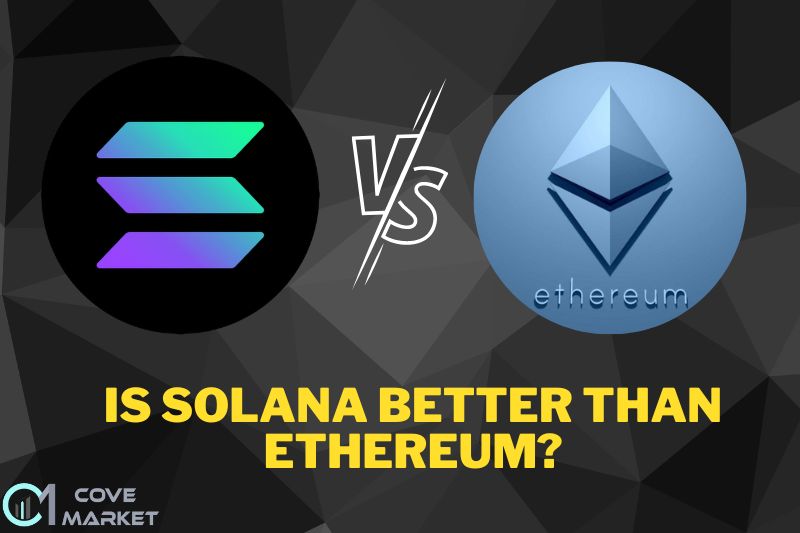
Solana is a rapidly growing ecosystem for dApps, as covemarkets.com already stated. Additionally, Solana can run smart contracts, which is necessary for DeFi and NFTs.
Solana has unavoidably been compared to Ethereum as a result. The community created the technology that powers the cryptocurrency ether (ETH) and dozens of modern applications.
Ethereum compensates for its lack of transaction speed and cost-effectiveness with a mature decentralized system.
In terms of energy usage, Ethereum is more energy-intensive than Solana.
The proof-of-work (PoW) paradigm used by Ethereum requires miners to solve challenging puzzles to validate transactions. The technology is, therefore more energy-intensive and harmful to the environment.
Ethereum offers a sophisticated and significantly more developed DeFi ecosystem if we’re talking about price. Solana, a new competitor, offers quicker transaction times at reduced costs.
Because Ethereum has been using this blockchain since 2014, transactions are more secure. This means it has had time to be optimized for investors.
However, Solana is preferable if you’re seeking quick transactions and a cheap tool. In 2020, Solana was developed, giving customers a more economical choice.
For people who are interested in investing in NFTs, Ethereum has been the most prosperous blockchain overall, even if it wasn’t the first to offer NFTs. Solana smart contracts are stateless, in contrast to Ethereum.
The platform is popular among the increasing number of NFT artists and traders because of its quick transactions and reasonable prices.
The platform’s block time is 400 milliseconds, and each transaction only costs one cent. The platform is unaffected by censorship and will always provide unrestricted trade of NFTs.
What to Consider When Joining a Solana Project?

- The team should have a strong background in blockchain technology and a track record of successful projects.
- The roadmap should be clear and achievable.
- The tokenomics should be fair and attractive to investors.
- The community should be active and supportive.
- The marketing strategy should be well thought out and executed.
- Finally, The vision should be ambitious and inspiring.
Is Solana Ecosystem Better than Ethereum?
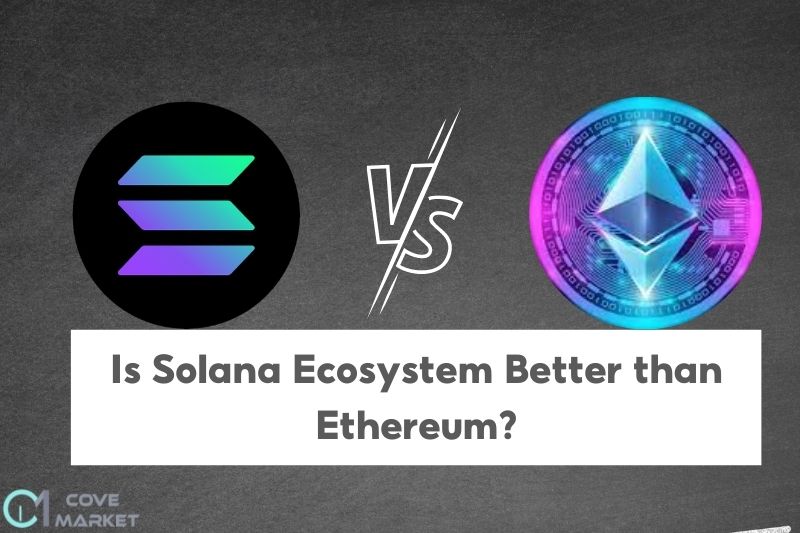
When contrasting SOL and Ether, it’s critical to identify their blockchain actions’ unique features or requirements.
When contrasting Ethereum with Solana, the underlying technology is the critical point of discussion. If you’re a developer, you’ll be particularly interested in this.
Each blockchain has a unique consensus method and a variety of scalability options. Although Ethereum has a considerably bigger trade volume and is more prevalent in the cryptocurrency market, Solana is the fastest blockchain.
The two networks’ potential for expansion may pique investors’ interest more. One may expect that both of these networks will increase in the future as the decentralized world grows.
FAQs
 What are the transaction fees on Solana blockchain?
What are the transaction fees on Solana blockchain?
The SOL network offers an exceptionally cheap transaction cost of just $0.00025 per transaction, which is made possible by the more excellent block time and size.
Solana is now among the blockchains with the lowest transaction costs because to this cost.
What is the focus of each Solana project?
Each Solana project is focused on providing a different service or solution. For example, the Solana Foundation is focused on developing the SOL platform, while the Labs team is focused on building applications on top of the Solana platform.
Which is the best Solana project?
As the best SOL project for investors may vary depending on their needs and preferences.
However, some popular Solana projects include the Core project, which provides the core functionality for the platform, and the Labs project, a research and development arm of the SOL Foundation.
Where can I learn about upcoming Solana projects?
The Solana Foundation website is great for learning about upcoming its projects. The site includes a blog, a roadmap, and a resources section.
Conclusion
Numerous intriguing and successful Solana projects have been introduced on the network since the mainnet of the network was released in March 2020.
Many of the Solana platform’s hundreds of applications pick it because it offers a scalable blockchain solution with reasonable transaction fees.
Solana’s cost-effectiveness attracts more Dapp developers to the network every day, expanding its ecosystem and enlarging the Solana community as a whole.

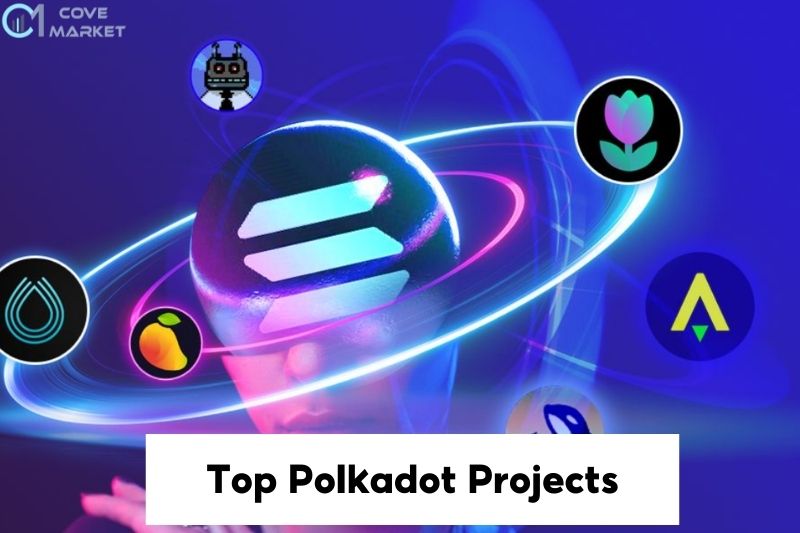
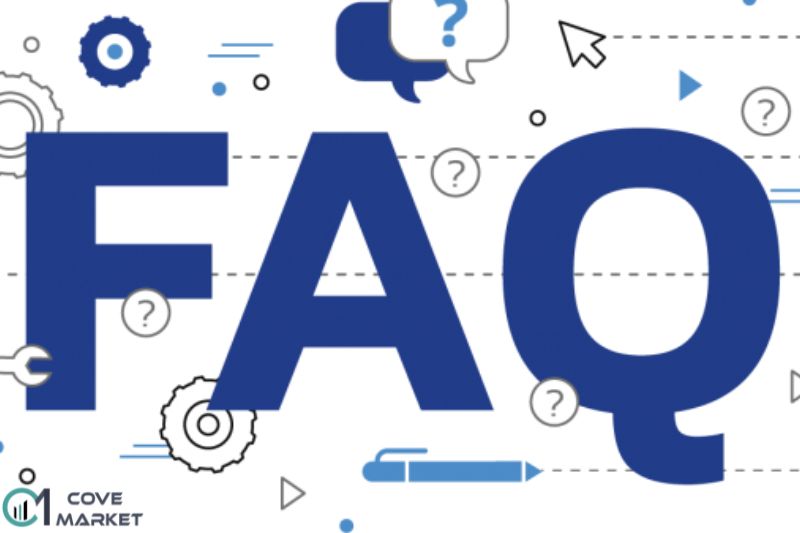 What are the transaction fees on Solana blockchain?
What are the transaction fees on Solana blockchain?